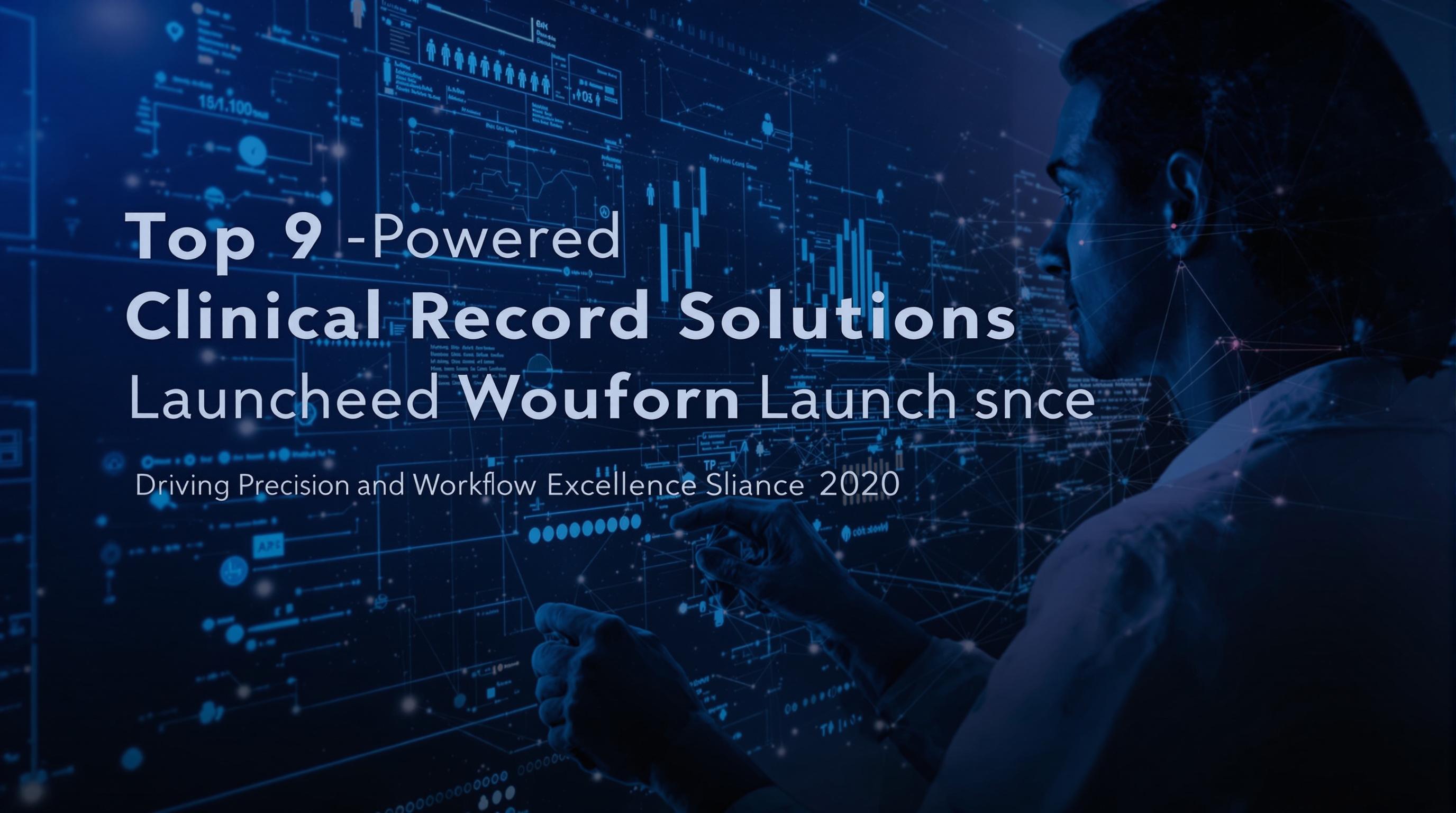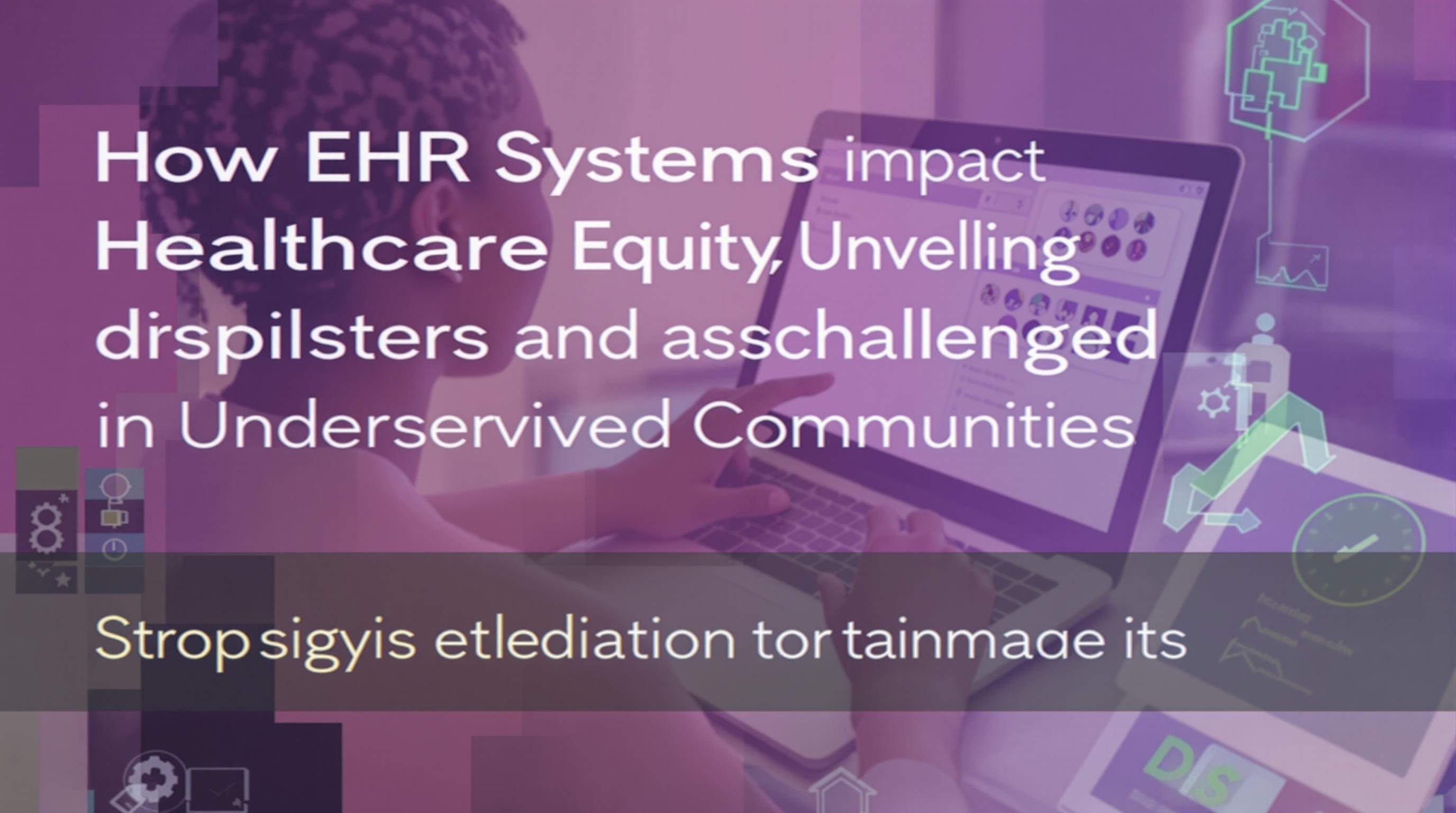Related Articles
- The Unexpected Impact of Environmental Factors on the Accuracy of Medication Dispensing Technologies
- Exploring the Influence of Mental Health Stigma on Accessibility and Affordability of Coverage in Modern Insurance Plans
- How Cloud Storage Quirks Are Quietly Complicating Patient Data Protection in Modern Healthcare Settings
- Top 6 Emerging Medical Billing Platforms Revolutionizing Practice Revenue Cycles Since 2019
- When Digital Distance Deepens Divide: Surprising Social Costs of Remote Health Services in Underserved Communities
- The Unexpected Role of EHR Usability in Physician Burnout and Strategies to Reclaim Workflow Balance
How Legacy EHRs Hinder Clinical Innovation: Examining the Silent Roadblocks to Digital Transformation in Healthcare
How Legacy EHRs Hinder Clinical Innovation: Examining the Silent Roadblocks to Digital Transformation in Healthcare
Legacy Electronic Health Records (EHRs) significantly stall progress in clinical innovation by imposing technological limitations and inefficiencies that disrupt digital transformation in healthcare. This article unpacks how outdated systems create silent barriers, using real-world examples, statistical evidence, and varied narrative styles to engage readers aged 16 to 70 in understanding these critical roadblocks.
Is healthcare stuck in the past? You bet it is.
Imagine trying to innovate on an old rotary phone when everyone else is using the latest smartphone — that’s how many healthcare providers feel wrestling with legacy EHRs. The frustration is palpable because these systems weren’t built to support the rapid pace of modern medical advancements.
Take, for example, Beth Israel Deaconess Medical Center, which faced monumental challenges integrating newer digital tools with their legacy EHR, Epic’s older version. They reported a 25% delay in implementing AI-driven diagnostics due to interoperability issues in 2021 (Healthcare IT News, 2022).
The Invisible Chains of Outdated Technology
Legacy EHRs act like invisible chains, rooting healthcare institutions in yesterday’s tech. These older systems demand excessive maintenance, often requiring IT teams to patch their way through costly upgrades rather than pursuing innovative solutions.
According to a 2023 KLAS Research report, 68% of hospitals with legacy EHR systems admitted their platforms limit adopting AI and machine learning applications, critical for next-gen clinical workflows.
A Story from the Trenches: The Tale of a Frustrated Clinician
Let me share a story about Dr. Anita Sharma, a 45-year-old internist passionate about personalized medicine. Working in a hospital chained to a decade-old EHR system, she often spent more time wrestling with slow software than with patients.
“I tried implementing a new algorithm for risk prediction,” she recalled, “but our system couldn’t handle the data input. It kept crashing. Patients were waiting, and I was stuck with troubleshoot tickets.” Her tale echoes the everyday battle between innovation aspiration and legacy constraints.
Legacy Systems and Data Silos: A Match Made for Miscommunication
When healthcare data is siloed, innovation faces significant obstacles. Legacy EHRs often store fragmented patient information in isolated silos, which prevents seamless information sharing across platforms, institutions, or even departments.
For instance, a 2020 study by the Journal of Medical Internet Research found that 56% of clinical decision delays could be traced back to inaccessible or incomplete patient data stored in outdated EHR systems.
Why Digital Transformation is More Than Just Installing New Software
Consider the difference between slapping a new coat of paint on an ancient building and constructing a smart facility from scratch. Healthcare organizations sometimes underestimate the complexities of digital transformation, believing a simple upgrade suffices.
But legacy EHRs are not plug-and-play devices. They require substantial infrastructure overhaul, staff retraining, and workflow redesign, which many institutions find daunting. Yet, without these changes, the potential for clinical innovation remains capped.
Funny But True: The “404 Error” on a Stethoscope
It feels ironic, yet painfully real: one hospital tried to integrate voice recognition software into their legacy EHR for hands-free charting. The voice commands often returned “system error” responses, as if the stethoscope itself was asking, “404? What’s that?”
Though humorous, this snippet illustrates the misalignment between cutting-edge tech and legacy infrastructures.
Statistics That Speak Volumes
Here’s a shocker: Gartner predicted a $300 billion loss in productivity worldwide in healthcare by 2025 directly caused by obsolete EHR systems (Gartner, 2023). This figure underscores the pressing need for modernization.
Yet, despite this, adoption of cloud-based, interoperable EHRs remains sluggish — only 44% of hospitals have made significant progress toward modern systems as of 2023 (American Hospital Association, 2023).
The Patient Perspective: How Legacy EHRs Affect Care Quality
Most patients aren’t aware when their data is trapped in labyrinthine legacy systems. They expect swift and accurate diagnoses, but doctors constrained by outdated EHRs can’t always deliver.
One patient survey showed that 33% of respondents experienced delays in treatment due to missing or inaccessible electronic records (Health Affairs, 2022). Behind every statistic is a person potentially impacted by technological inertia.
The Persuasive Case for Upgrading
Investing in modern EHR platforms is not just a nice-to-have — it’s essential for survival in a future that demands agility and precision. Hospitals that have made the leap, like the Mayo Clinic, report a 15% increase in clinical efficiency and better patient outcomes within two years.
Moreover, cutting-edge EHRs enable integration with wearables, telehealth, AI diagnostics, and predictive analytics — tools that legacy systems simply can’t support reliably.
Some Optimism: How the Industry is Slowly Turning the Tide
Progress is underway. Initiatives such as the 21st Century Cures Act encourage interoperability and data sharing, aimed at dismantling the walls legacy EHRs have erected.
Startups and tech giants alike are introducing middleware solutions that bridge old and new infrastructures, easing migration pains and accelerating innovation adoption.
The Human Factor: Why Clinician Buy-In Matters
Technical advancements mean little without healthcare workers’ trust and willingness to embrace change. Many clinicians experienced with legacy systems resist new EHR implementations due to fears of disruption and steep learning curves.
Engaging front-line staff early in the design and rollout phases helps smooth transitions. Successful case studies show that clinician involvement can cut implementation time by up to 30% (Health IT Analytics, 2022).
A Young Voice on an Old Problem
As a 23-year-old aspiring health tech advocate, I see the generational gap: younger patients and clinicians expect instant digital solutions, while many institutions drag behind. Bridging this gap means breaking free from legacy ‘anchors’ and embracing a future-proof digital health ecosystem.
Wrapping Up: Removing Barriers for Tomorrow’s Healthcare
Legacy EHRs silently hinder clinical innovation by demanding workarounds, causing data fragmentation, and slowing digital transformation. The future of healthcare depends on acknowledging these roadblocks and choosing modern, interoperable, and flexible solutions.
For those involved—patients, clinicians, administrators—it’s clear: upgrading beyond legacy systems isn’t just technology strategy; it’s a clinical imperative.




